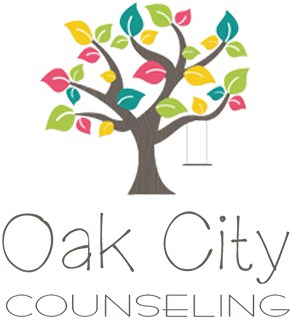So what really IS play therapy and how exactly does it work? Oftentimes parents and even well intentioned professionals mistake ‘play therapy’ as a nice and friendly therapist playing games with a child in order to get them to talk.
Play, as defined by Burghardt (2005) is distinguished from other activities in the following three areas:
- Play mimics a common or important purposeful behavior
- Play is voluntary, pleasurable and has no immediate survival role or ‘purpose’
- Play takes place in a non threatening, low duress context
If we are pushing children to talk by playing ‘feeling’ board games or telling them how or what to play with, these conditions are not met. Dr. Garry Landreth (2002) suggests that traditional ‘talk therapy’ is inappropriate for children due to the fact that they have not yet developed the cognitive skills to make meaning out of words in the way that adults and older adolescents might.
Over the past 30 years research has indicated that play therapy is a highly effective form of treatment and Child Centered Play Therapy has achieved evidence based status by the California Clearinghouse (Bratton et al 2005). Recent studies indicate that the maximum effectiveness of play therapy occurs between 30-40 sessions. It has also been shown that short term play therapy interventions may not be effective as children are just beginning to express and act out previously unexpressed emotions and are unable to continue processing those emotions and resolve these issues without adequate treatment time.
Drs Bruce Perry and Rick Gaskill (2012) have found that somatosensory interventions-manipulating objects/toys and the body through touch, movement, repetitive actions, sounds, music, etc. can actually REORGANIZE the neural networks in the brain to help a child regulate their emotional state. This can have a huge impact on behavior issues, AD/HD, anxiety, mood disorders, etc. All of which are affected by the neural regulatory system in the brain.
Perry & Gaskill (2012) further reported that the success of these interventions must occur when the therapist can speak a child’s ‘primal language’ which is defined as ‘gentle tones of voice; comforting, repetitive sensory experience; and soothing repetitive and patterned movements by patient, safe adults’.
I often say that Play Therapy can be taught but speaking a child’s language is something that a person either has naturally or does not. Children are smart and perceptive and can often see through disingenuous people. In working with children, their comfort, enjoyment and bond with myself or a therapist is THE key component to having a successful treatment experience.
For more information about the Neuroscience of Play please find Bruce Perry & Richard Gaskill’s chapter on this at the following link
Bibliography:
Bratton, S., Ray, D., Rhine, T., & Jones, L. (2005). The efficacy of play therapy with children: A meta-analytic review of treatment outcomes. Professional Psychology: Research and Practice, 36(4), 376–390.
Burghardt, G. M. (2005). The genesis of animal play: Testing the limits. Cam- bridge, MA: MIT Press.
Gaskill, R. L., & Perry, B. D. (2012). Child sexual abuse, traumatic experiences,and their impact on the developing brain. In P. Goodyear-Brown (Ed.),Handbook of child sexual abuse: Identification, assessment, and treatment(pp. 30–47). Hoboken, NJ: Wiley.
Richard L. Gaskill and Bruce D. Perry (2014). The Neurobiological Power of Play. Chapter 11 in Creative Arts and Play Therapy for Attachment Problems. Edited by Cathy A. Malchiodi and David A. Crenshaw. New York, NY: The Guilford Press.
Landreth, G. (2002). Play therapy: Art of the relationship (2nd ed.). Muncie, IN: Accelerated Development.
